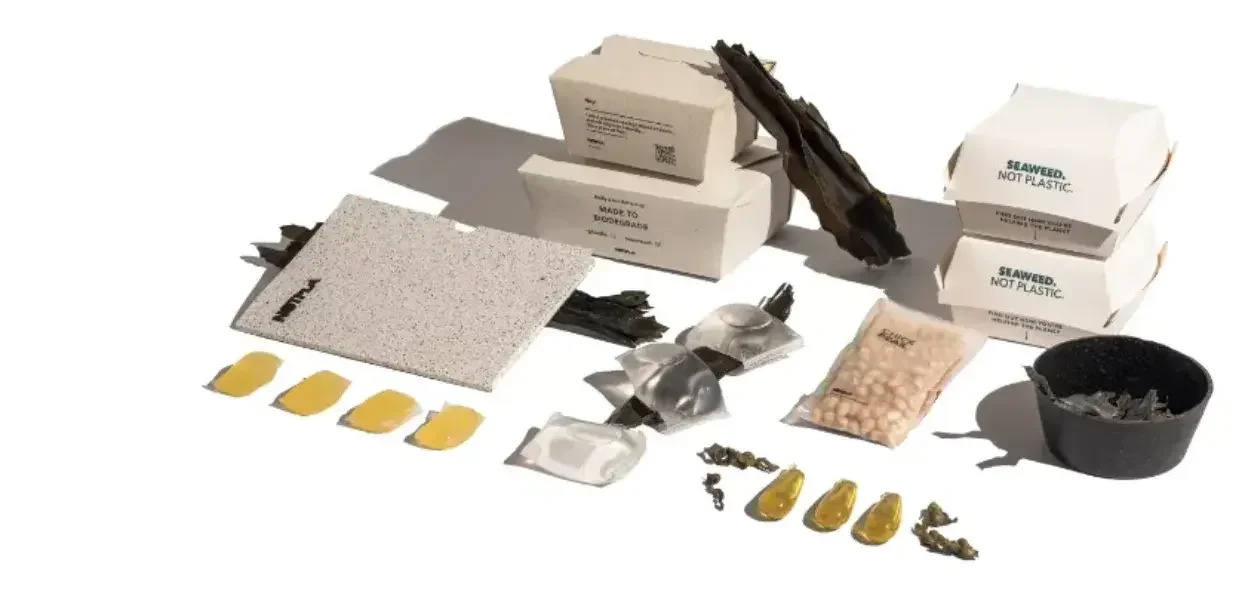
Laurel Brunner discusses how Notpla has developed a creative, biodegradable and edible packaging material that is made from brown seaweed.
If its inventors really want attention, Notpla needs a better name for its amazing product. The company has developed an innovative biodegradeable and edible packaging material, based on brown seaweed. The material is being sold as an alternative to plastics, either as a coating for food packaging or as Ooho. Ooho, another name worthy of reconsideration, is an edible bubble that can replace single use packaging for liquids. Interestingly Notpla is selling its materials as finished packages from its website, along with a range of Notpla papers.
Notpla is a contraction of ‘not plastic’ and the product was invented by a group of chemists and chemical engineers at Imperial College, London. They have based their invention on an abundant raw material that grows at a rate of one metre per day in sea water. Seaweed needs no fertiliser and it readily biodegrades, with decomposition taking four to six weeks. Notpla will rot down in any composting system or in landfill and discarded it does not pollute PET recycling.
This product is worth a closer look for a number of reasons, not least its recyclability and the fact that it is based on seaweed. The developers are selling generic packaging materials to suppliers of food and liquid products and direct to food and beverage sellers from their websites. At this stage Notpla seems to be going for sporting events and the festival crowd, particularly with Ooho which can also be used for sauces and liquid condiments. The volumes are pretty small, with a maximum of 500 units per order but the model will be attractive to owners of the kiosks and vans selling food at festivals and other outdoor events. It will also be attractive to any organisation providing catering services.
It’s all pretty small scale at the moment, but Notpla and its sales model could be an interesting opportunity for an enterprising digital printer. Digital printing companies or digital press manufacturers might want to consider teaming up with Nopla for bespoke printing services, assuming that Nopla is printable.
The innovation is impressive enough to get the attention of the UK’s Prince William’s Earthshot team. The Earthshot prize was set up in 2020 under the auspices of the Prince and The Royal Foundation. The prize is awarded for advances in eco-solutions that “repair and regenerate the planet”. Nopla has been awarded $1.2 million in the “Build a Waste Free World” category to support future innovations in climate change mitigation.
So does the Nopla name matter so much? Yes it does. Nopla’s honchos need to think about this, if this product is to gain the recognition it deserves.
This article was produced by the Verdigris Project, an industry initiative intended to raise awareness of print’s positive environmental impact. This weekly commentary helps printing companies keep up to date with environmental standards, and how environmentally friendly business management can help improve their bottom lines. Verdigris is supported by the following companies: Agfa Graphics, EFI, Fespa, Fujifilm, HP, Kodak, Miraclon, RicohSplash PR, Unity Publishing and Xeikon.